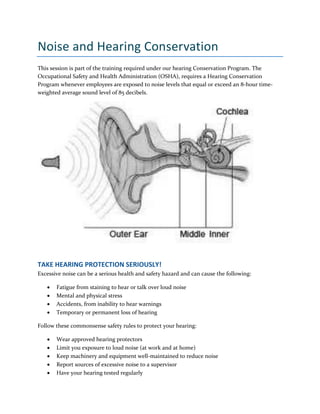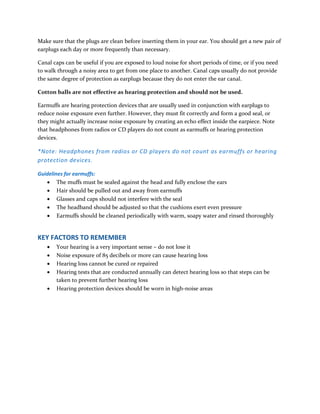This document provides information about noise and hearing conservation. It notes that OSHA requires a hearing conservation program for employees exposed to noise levels over 85 decibels averaged over 8 hours. Excessive noise can cause temporary or permanent hearing loss as well as other health issues. The document outlines how to properly use hearing protection devices like earplugs and earmuffs to reduce noise exposure and protect hearing. Regular audiometric testing can detect early signs of noise-induced hearing loss.






